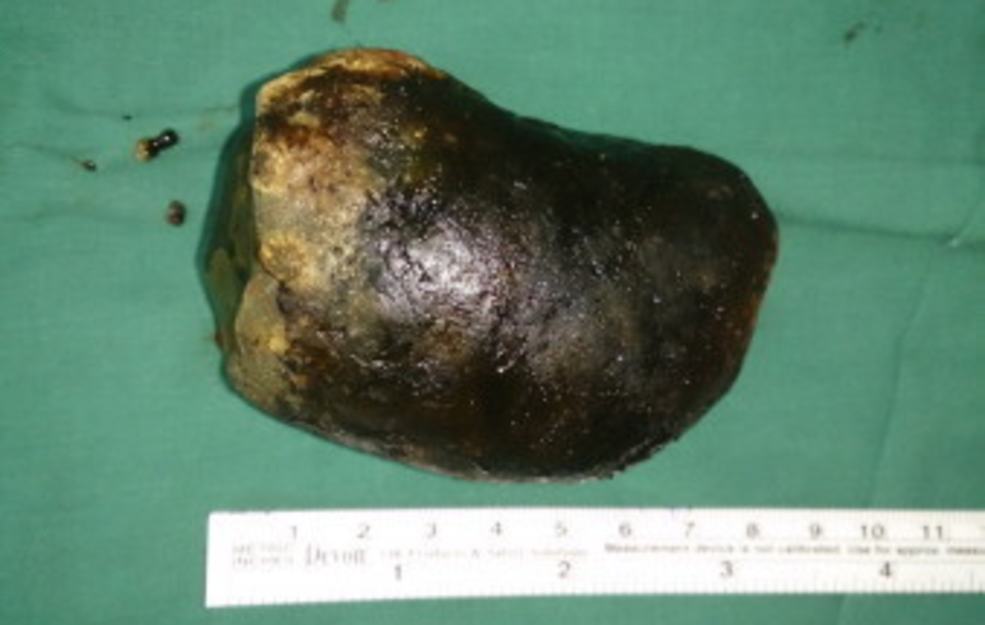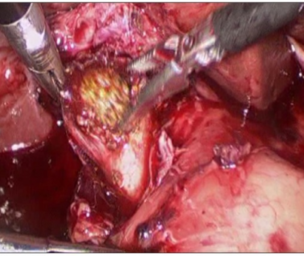What Is Cholelithiasis?
What Is Cholelithiasis?
Cholelithiasis is also medically known as gallstones, or bile duct stones. They are known to be the hard deposits which tend to form in the gallbladder. It is said to be the presence of gallstones in the common bile duct of the body. Gallstones are mostly formed in the gallbladder. Bile duct is known to be the tube which carries the bile from the gallbladder to the intestine region. The gallbladder that is present in the body is known to be a pear shaped organ just below the liver and the upper right hand section of the abdomen. Most of the time, the stones remain in the gallbladder, or they can pass unobstructed through the common bile duct. It has been seen that around 15% of the individuals who suffer from gallstones also have gallstones in their bile duct.
The exact cause of cholelithiasis is not yet completely understood, but there are multiple reasons for the formation of gallstones. Gallstones are known to develop if the bile contains an excessive amount of cholesterol or if there is too much bilirubin, which is also one of the components of bile. It can also happen when there is dysfunction in the gallbladder and it is unable to release the bile. There are various types of cholelithiasis, but the most common among them is the cholesterol stone, which is known to occur due to too much cholesterol present in the bile. One of the other types of gallstones is the pigment stone, which is said to form due to too much bilirubin. It is a kind of waste product that is known to be created by the red blood cells breakdown in the liver. In the case of cholelithiasis, the size as well as the number of gallstones would vary. It can either form many small stones or just one large one.
Functions of the Gallbladder
The gallbladder is known to be a pear shaped, hollow structure located just below the liver and on the right hand side of the abdomen. One of the primary functions of the gallbladder is to store as well as concentrate the bile, which is a yellow-brown colored digestive enzyme, and it is produced by the liver. The gallbladder is said to be a part of the biliary tract. It serves as a main reservoir for the bile when it is not being used for the process of digestion. The absorbent lining of the gallbladder is known to concentrate the stored bile. When food enters the small intestine, there is a hormone by the name of cholecystokinin which is released, thereby providing a signal to the gallbladder that it should now contract and start to secret bile into the small intestine region through the common bile duct.
What Do They Look Like?
Gallstones vary in number; they can range anywhere from one to a few hundred of them. They also vary in size from one millimeter to three or four centimeters. When the gallstones are only single in number or just a few of them, they are mostly round in shape, but when they are in large numbers, they tend to be mostly faceted, and the reason for this is because they get rubbed against one another. The brown colored ones would be irregular or crumbly. Most of the time, gallstones pass out of the gallbladder or the ducts only if they are small in shape. It is basically a passage which is known to lead to many of their complications.
Symptoms
An individual may experience the symptoms of cholelithiasis either on a daily basis or it can be just once in a while. Below are the symptoms an individual would experience, and at any time they can become severe, hence, the individual should make a note of them:
- Pain in the abdomen, wherein this pain may be localized to the upper right side of the abdomen
- A feeling of tenderness in the abdomen
- The individual would not feel like eating, hence leading to a loss of appetite
- Fever
- Excessive sweating in certain instances
- Chills
- Swelling in the abdomen
- Stools which are clay colored
- Jaundice symptoms, wherein the skin and eyes turn yellowish in color
- Bloating of the abdomen
- Nausea
- A sudden pain that would start to radiate from the abdomen, moving upwards to the upper right shoulder or the back region
- Vomiting
Below are a few of the serious symptoms which should not be ignored, since they can be fatal to the health of the individual:
- Swelling in the abdomen and bloating
- Fever, which can become higher than 101 degrees Fahrenheit
- Severe pain in the abdomen
- Feeling nauseous either with or without vomiting
Treatment
The treatment process for cholelithiasis would start with first seeking medical help, wherein the doctor would determine if there is the presence of cholelithiasis by carrying out a proper diagnosis. For this, the doctor may ask you to provide blood samples and also undergo certain diagnostic tests or procedures. Many a times, people suffering from cholelithiasis would not notice any kind of symptoms, but if there are symptoms, the individual would be hospitalized and antibiotics would be started so as to prevent any kind of infection. In such cases, the doctor would stop the intake of food and intravenous fluid would start to be administered to allow the digestive system to rest for a period. The individual would also receive medication for the pain in the abdomen. If there are recurrent cases of cholelithiasis, then one of the most common treatment options would be surgery to remove the gallbladder. In the case of surgery, there are also two methods, the first being an open cholecystectomy; in this, the whole organ is completely removed by just a single incision; and the second method is a laparoscopic cholecystectomy, wherein the gallbladder is removed in small pieces by carrying out multiple incisions. This laparoscopic method has been used more frequently. Since the gallbladder is not a very essential organ, most individuals can easily live a normal life after the surgery.
Below are the various treatment options available for cholelithiasis:
- Endoscopic retrograde cholangiopancreatography, or ERCP, which is basically an imaging process that would allow for the treatment of some of the bile duct issues and can also include the removal of gallstones, which can also cause obstruction.
- There are also various medications or drugs available for dissolving the gallstones, however, this mode of treatment takes a bit longer, and there are chances that the gallstones can occur again.
- Lithotripsy method, wherein the doctor would use electric shock waves to dissolve the gallstones, but this method is not commonly used today.
- An open cholecystectomy, wherein the doctor would go in for the complete removal of the gallbladder by just a single incision. This technique is more invasive, hence, it is a less commonly used treatment option.
- A laparoscopic cholecystectomy, wherein the gallbladder would be removed in pieces by carrying out several incisions. This treatment method is less invasive and thus is also a commonly used method.





















